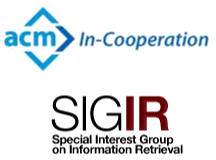FIRE 2016
Forum for Information Retrieval Evaluation
ISI, Kolkata
7 - 10 December
Paolo Rosso (Universitat Politècnica de València, Spain )
Date: 7th December (Morning Session)
Given a document, what are its author's traits? Author profiling distinguishes between classes of authors studying how language is shared by classes of people. This task helps in profiling aspects such as age, gender, native language, and personality trait. Author profiling is a problem of growing importance in forensics, security, and marketing. E.g., from a marketing perspective, companies may be interested in knowing, on the basis of the analysis of blogs and online product reviews, the demographics of people that like or dislike their products. The focus of this tutorial will be on author profiling in social media since we are mainly interested in everyday language. We will also describe the performance of the best performing systems that participated in the author profiling shared tasks at PAN@CLEF (2013-2016): pan.webis.de/
Parth Gupta (Indian Institute of Information Technology, Vadodara)
Manoj Chinnakotla (Microsoft, India)
Date: 7th December (Afternoon Session)
Deep learning approaches have taken the machine learning community by storm. It's been successfully applied for image processing, speech recognition and natural language processing (NLP). The main advantage of deep learning over conventional approaches is that it's completely data driven with stacked layers of neural networks progressively "learning" the data with increasing levels of abstraction, without the necessity of manually hand-coded features. In the context of NLP, word embedding is the starting point of transforming a categorical feature, e.g. a word from a vocabulary, into a continuous representation of a real-valued vector in the Cartesian space of p (a finite integer) dimensions. The outcome of the embedding ensures that semantically close terms, e.g. 'sun' and 'solar' are placed in close proximity in comparison to terms that are not semantically similar, and hence are placed farther apart, e.g. 'computer' and 'sun'.
The objective of this tutorial is to introduce the deep learning technologies including basics. The state-of-the-art models for information retrieval based on deep-learning will be covered and various applications will be discussed. The overall goal is to familiarize the audience with the latest developments in the field and explain them with details






